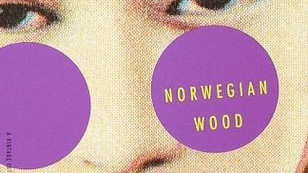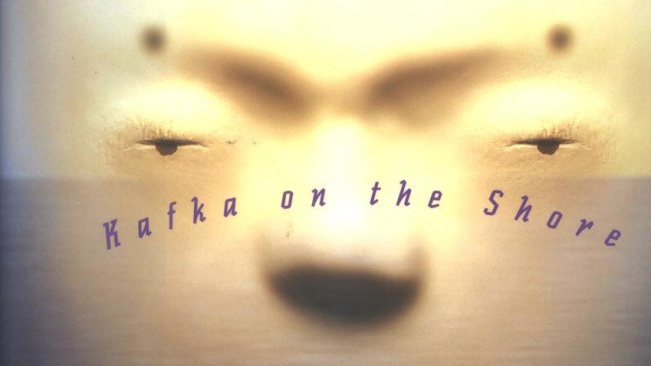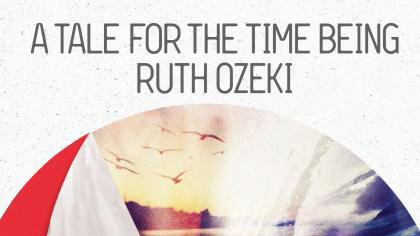Today I am going to talk about nothing that I previously said I would, and instead put an end to my annoying hiatus with a TGR on the wierd and wonderful world of Japanese fiction. Also, yes, that is how I spell ‘wierd’ and I stubbornly refuse to change my ways.
Japanese literature has become such a big part of my life, which hit me when I realised I wasn’t actually interested in reading any other kinds of books anymore. Over the course of perhaps a year I’ve amassed a small library of Japanese authors, and am now in the phase where I’m slowly re-reading each one. I know ‘Japanese fiction’ may sound like a sweeping statement since no story can quite be compared on equal terms to another, much less an author to his peers, but it can’t be denied that the stories I’ve read by Japanese authors have all been so poignantly told and delicately written, and there is a striking essence to them that sets them apart from all the other books I’ve read. Most of them are also pretty wierd – some border freaky – but in a manner that deepens your sensations of the world. Many I’ve read have provided me strange and precious moments of clarity.
It all began because I kept spotting ‘1Q84’ in bookstores, and became quite acquainted with the name Haruki Murakami. So one day at a second-hand book stand in Portobello Market, I spoke with the lovely elderly man who ran it and asked if he had any Murakami books he had and would like to recommend. He very kindly and patiently took a few out and mulled over them, before deciding for me that since it was my first Murakami of all I should start with a shorter novel instead of a gargantuan trilogy. So I ended up with A Wild Sheep’s Chase. And hence it all began.
A Wild Sheep’s Chase was, up to that point, the absolute strangest thing I’d EVER read. I kid you not when I say there is absolutely no way to describe it without making it sound foolish or even comical. It is neither. It is bloody intense. Let me try anyway: the main character (none of the characters, as I recall, were explicitly named) comes into possession of a photograph, which he uses in an ad. He then falls into the web of ‘The Boss’, a powerful but dying man who demands that he locate one of the specific sheep in the photograph, with no explanation afforded. As he travels all over to find the place in the photograph and hence, the sheep, he realizes that this sheep is some sort of … spirit? … that takes possession of people and uses them as vessels to achieve power and dominance.
I told you so.
Anyway, it’s a really good story that my scanty synopsis can do no justice too.
I was hooked. When I reached the very vague ending my mind sort of burst into little pieces and I was a mixture of confusion, awe and more confusion. I desperately wanted to know what really went on in the story – I even considered emailing Murakami himself, so great was my thirst for answers – but instead I spent hours trawling book discussion websites to see what other people thought. Turns out most everyone, like me, enjoyed it but also had almost no clue what the ending really was. Damn it.
And so I harboured a physical need to read every Murakami there was, and, like I said, it all began.
Here’s a list of all the Japanese fiction I’ve read and own, just to give you an idea of what I mean when I say ‘Japanese fiction’ and what I’m familiar with:
A Wild Sheep’s Chase, Murakami
The Elephant Vanishes, Murakami
Norwegian Wood, Murakami
The Wind-up Bird Chronicle, Murakami
Kafka on the Shore, Murakami
1Q84, Murakami
Hard Boiled Wonderland and the End of the World, Murakami
Colorless Tsukuru Tazaki, Murakami
The Strange Library, Murakami
Strange Weather in Tokyo, Hiromi Kawakami
Manazaru, Hiromi Kawakami
A Tale for the Time Being, Ruth Ozeki
All Over Creation, Ruth Ozeki
Kitchen, Banana Yoshimoto
Amrita, Banana Yoshimoto
Asleep, Banana Yoshimoto
The Diving Pool, Yoko Ogawa
The Box Man, Kobo Abe
Obviously if I started in-depth reviews of each and every one of them it would take me forever plus you and I would both be bored stiff by the end of it, so I’m just going to talk about some of the more significant ones. Here goes!
Norwegian Wood
Man oh man, one of the most beautiful stories I’ve ever read. You know it’s good when you finish the last sentence and immediately flip back to the first page to start again. I’m not going to spend too much time summarising the plot because, well, I’m sure you can get that on wikipedia, or you could just read the book. Toru Watanabe’s best friend Kizuki committed suicide years ago, sending his then-girlfriend Naoko into a downward spiral of despair, loneliness and depression. As Toru tries to care for and save her, he falls in love with her, but her emotional problems means trying to hold on to her is as difficult as trying to grasp a mere shadow of an existence. Gentle, quiet, Toru’s solitary lifestyle revolves around school and the ever-deteriorating Naoko, peppered with enigmatic characters like playboy Nagasawa and the effervescent, complex Midori, who also vies for Toru’s feelings.
The story is very much unlike the rest of Murakami’s dark fantasy, magical realism novels – it is far more real than any of those, but no less captivating. It is a love story, but one flecked with obstacles; it is a grim reminder that love doesn’t always look like a Disney movie, and subtly it maybe even says that love can be about the journey instead of the destination. Naoko’s struggle against depression is palpable and sad, her shy disposition barely containing the instability of her mind and the darkness that gradually eats her heart up.
Me Thinks: A story of extraordinary accomplishments. Written in Murakami’s usual simple style, no fluff or fanfare, but conveying such depth of emotion, the complexities and depths of the human condition, that it will make you marvel that words alone can construct such pictures of both immense beauty and great despair. An absolute must-read: twice, even, not just once!
“No truth can cure the sorrow we feel from losing a loved one. No truth, no sincerity, no strength, no kindness can cure that sorrow. All we can do is see it through to the end and learn something from it, but what we learn will be no help in facing the next sorrow that comes to us without warning.”
(P.S.: They made this into a movie, and it was an absolute tragedy of a film. Do not even bother.)
The Wind-up Bird Chronicle
So dark I couldn’t read it till the end. The worst thing was it wasn’t dark in an explicit manner – there was just an ominous undercurrent that ran, shrouded by apparent normality and blandness, that kept building up until it frightened and disturbed me just way too much. Till today I don’t even know what it was that made me freak out like that, and I have a feeling I could’ve read till the end and still wouldn’t be half sure. That’s Murakami and his mysteries for you.
Me Thinks: I threw it away. It’s just one of those things I didn’t want in my home. Yes, it was pretty damn dark. Wouldn’t recommend it; there are so many other great Murakamis that are unsettling in a far more welcome manner.
Kafka on the Shore
Absolutely on par with the greatness of Norwegian Wood. Much, much harder to describe, though. Kafka Tamura, one of two main characters, runs away from home, only to wake one night in the woods with his shirt stained with the blood of someone else. He doesn’t know who, but suspects he is fulfilling the morbid oedipal prophecy he ran away to escape. At the same time, the elderly, simple-minded Nakata, a very lovable and endearing character (perhaps the most of all Murakami’s characters) finds a host of wierd things happening to him that upset the comfortable routine of his humdrum and familiar lifestyle. When this culminates with murder on his hands, he embarks on a journey that takes him ever closer to Kafka, for reasons he cannot explain or understand. The wierd stuff just keeps happening.
The story is not too long (think 1Q84, that’s almost impossible to hold open in one hand) and not too short as to be under developed. Nakata was to me an extremely likeable and charming character, and [SPOILERS ALERT] when he died I actually started to tear. Which is not a normal reaction for a Murakami novel. Normally swear words flit through my mind in frustration and in a number of languages. But I still love them.
Me Thinks: Right up there with NW. A perfect and consummate sample of Murakami’s eerie, haunting, but magical storylines. Expect a host of questions, but don’t, whatever you do, expect any of them to be answered.
Hard Boiled Wonderland and the End of the World
To my knowledge there is no way possible to properly describe this bizarre, part-scientific, part-mystical plot, so all I will say is that it is a great story, though not light-reading at all; your brain will have to work in overdrive.
Me Thinks: This story only truly came together at the very end, where it began to vaguely make sense, so if you attempt this hefty, rather intense story, all I can say is: press on and keep going! It will be worth it.
Strange Weather in Tokyo
A subtle and beautiful story about the relationship between middle-aged Tsukiko and her ex-teacher. The elderly ‘sensei’, as she calls him both out of respect and for having forgotten his name at the beginning, is wise, composed, and gentlemanly in the way only an older person can be. Even though Tsukiko is independent, stubborn and a little bit brash, Sensei’s delicacy and gentleness toward her eventually moves her as well. Their relationship – at first awkward, eventually friendly, and at last essential to both – is unusual but charming, enviable even in its unconventionality. I don’t think the plot ever hits an especial high, but rather traverses along at a pleasant pace, not one to leave your adrenaline pumping but also never one to leave you bored.
Me thinks: Subtle and beautiful, reading this book is like experiencing and enjoying Spring. That’s the best description I can give! Also, they eat in almost every chapter of the book, so I would advise you to have some snacks at hand. Preferably Japanese snacks, of course.
A Tale for the Time Being
This one’s kind an odd one out, because although Ozeki is half-Japanese, she was born and raised in Connecticut. Therefore she doesn’t bear the same light, haunting, existential style that the rest of the authors in this list do; not as trippy, basically. A Tale for the Time Being is written clearly but no less beautifully: it tells the story of, well, Ruth, an author (well well!) who lives with her eccentric and artsy husband amidst the natural beauty of an island off British Columbia. One day she finds along the shore a package, which includes amongst other things the handwritten diary of a Japanese teen, Nao, which she begins to suspect has washed onto her shores in the aftermath of the 2011 tsunami. Each alternating chapter belongs to either Ruth or Nao’s narration of events, and hence the story also flits between two vastly different cultures, and as Ruth becomes more and more drawn into Nao’s words, and simultaneously, her fears and despairs, she realizes that she may play a far bigger part in this picture than she initially thought.
The book also gave me one of my favourite quotes to date:
‘When Ruth first saw these giant trees, she wept. At five feet, five inches, she had never felt so puny in all her life.
‘We’re nothing,’ she said, wiping her eyes. ‘We’re barely here at all.‘ “
Me Thinks: Not the most spectacular on the list, but an easy read, a sweet story and likeable characters. The premise is also captivating as it is. All Over Creation, however, also by Ozeki, was highly disappointing for me. Maybe you need to be especially interested in, well, the environment, to enjoy it, but I was simply rather bored.
Asleep
How do you ignore an author with a name like Banana?? Before I’d heard a single thing about her books I’d already decided I wanted to read them.
Asleep was the first book from Banana (I seriously cannot get over her name) I read, and it was my favourite. This already quite slim book was broken into 3 short stories, and because Banana tends to write in an exceedingly fluffy, flowery kind of manner, she quite easily spins off topic, so short stories brought out the best in her. Compared to the full novel Amrita, these were alot easier to follow and in a way much more enjoyable.
I read it some time ago and kind of forgot what the stories were, so I wiki-ed it, and it turns out wikipedia has a great summary of all three. Darn, I’m feeling kinda discouraged as a writer right now. *sorrowfully buries blogging dream*
Me Thinks: Banana’s stories are high in that ‘trippy’ factor (see what I did there?) and are steeped in spiritualism, the uncanny and the mightily-odd, but also written with a very feminine sensibility and attention to beauty, both in the crafting of her sentences and the dreamlike settings she brings to mind with her words. The perfect compliment to Murakami; I highly recommend her stories.
So, there it is!! This actually took far longer than I thought it would. But. I enjoyed it. I hope that, if you’ve never read any Japanese authors before, this extremely lengthy post will help get you started, because they are definitely worth your time and will be an experience like nothing you’ve ever had before. Of course, it’s also always just cool to read about Japan. Because Japan is cool.
If you’re already enthusiastically chewing through mountains of Japanese literature, I applaud you! I hope to someday be like you.
Okay now I can FINALLY GO MAKE DINNER.
Cheers (to the Bananas of the world!) x






